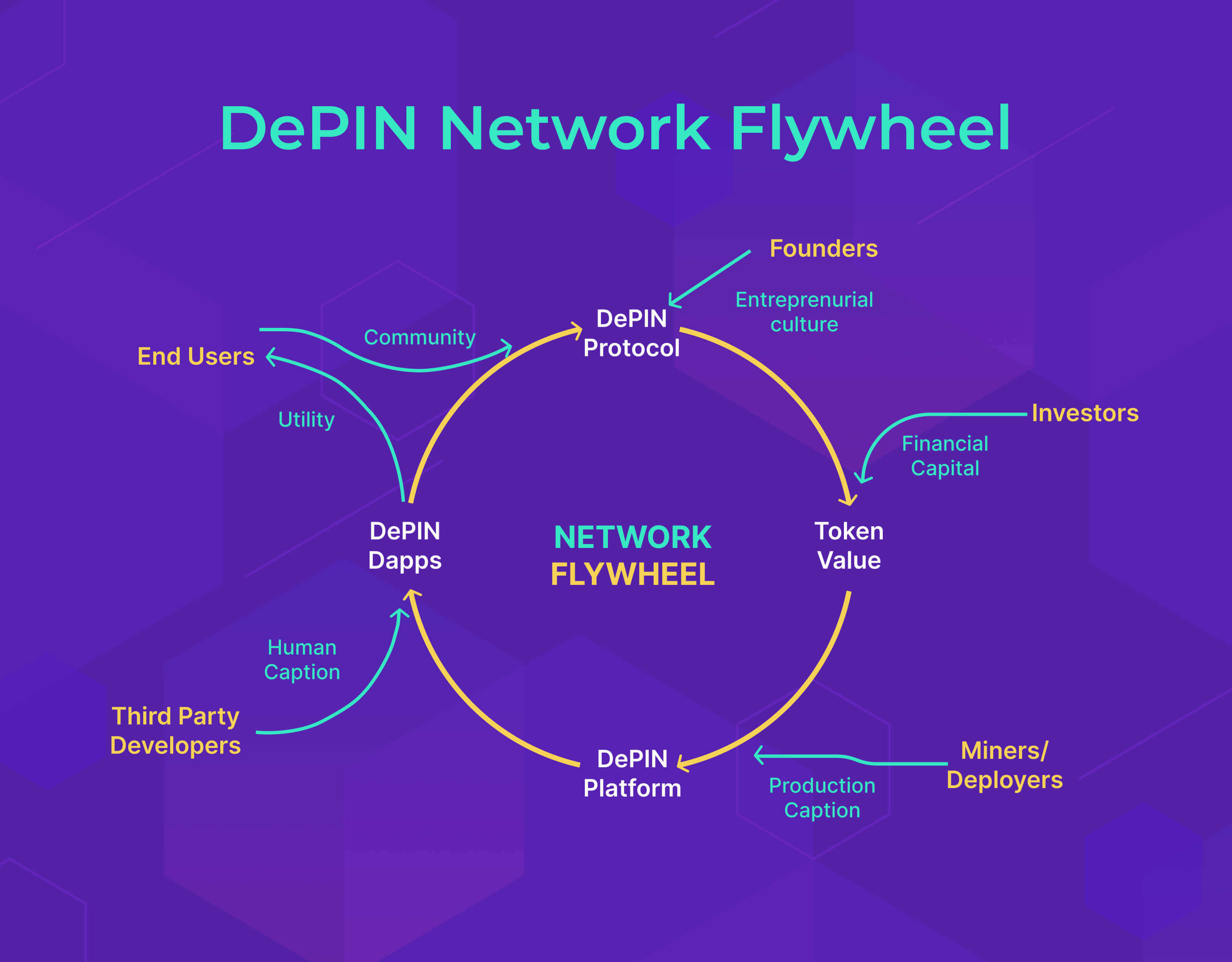Table of Contents

DePIN - What Is Decentralized Physical Infrastructure Network?
DePIN, or the Decentralized Physical Infrastructure Network, is a decentralized protocol using tokens to incentivize communities to build physical infrastructure from the basics.
Web3 is a concept that has been evolving over the years, taking on new structures and building new platforms and networks for easy operations. DePIN is here to embrace the next evolution and embark on the silver line of operations, making it easy and seamless. This incentive model encourages communities to build physical structures through the consensus revolving around the sector.
As the sector is emerging with new trends now and then, DePIN is rooting even stronger. Here, let us explore the wider perspectives of what DePIN is and a lot more.
What is a DEPIN?
DePIN is a decentralized protocol using tokens to incentivize people to crowdsource, build, and connect with real physical infrastructure. This is a revolutionary concept aiming to provide many essential services for traditional centralized communities to get better and more advanced. Blockchain development infusion allows peer-to-peer transactions and communications that completely remove third-party or intermediary involvement in the system. Improves efficiency and transparency and enhances utility, security, and resilience against disruptions.
Simply put, a decentralized public infrastructure network transforms the delivery and access of the public sector, empowers communities, and takes control over their structures. This innovative approach potentially transforms public-funded projects implemented with sustainable and inclusive infrastructure development.
Role of Decentralization in DePIN
Focused on involving a wider range of stakeholders in public infrastructure development projects, including government agencies, private investors, local communities, etc.
Via decentralized physical infrastructure networks, ensuring the record of all transactions secured in the immutable ledgers of blockchain technology fosters trust and transparency.
This minimizes corruption and mismanagement and considerably improves efficiency, cost-effective infrastructure development, and overall advancement with a decentralized system that enables collaborative and sustainable public infrastructure project solutions.
Let Us Understand Decentralized Physical Infrastructure Networks in Crypto
DePIN, or decentralized physical infrastructure networks, are crowd-sourced providers offering real-world services for users who leverage public ledgers and, in return, receive rewards via cryptocurrencies that apply on a similar blockchain network. Here, these immutable ledgers provide the service of remittance record-keeping and administration, allowing anyone to provide their service until they have sufficient resources. It ensures every action is recorded on the blockchain networks.
DePIN is getting versatile and spreading its wings to almost every sector, from crowd-sourced geographical services to building advanced infrastructural marketplaces. Everything is managed with blockchain.

Different Categories of DePIN
Physical resource networks
Location-based decentralized physical resource providers contribute hardware connectivity, mobility, energy, and similar services based on the sector. As the services are localized, they are non-fungible, location-based, and non-portable.
Digital Resource Networks
Fungible digital resource providers contribute computing power, shared bandwidth, and storage facilities as resources that are not set to location or related to their data.
Advantages of DEPINs
Consensus and Protocol
Blockchain fits DePIN perfectly in sync with its established protocols designed to govern peer-to-peer networks. Here, consensus mechanisms have an integral part in providing network participation, and they agree on the state of the network in a trustless manner
Tokenomics
Blockchain protocols come with a built-in mechanism that encourages and incentivizes participation and good behavior. As part of the blockchain network, everyone has their own proprietary crypto token, making it easy for all to create. DePINs leverage the incentivizing mechanism depending on user engagement and contribution to the network.
Accessibility and affordability
With significant upfront investments, building online services becomes easy. From sourcing equipment to managing time and developing resources to build the desired infrastructure the product needs, DePINs leverage crowdsourcing and work on a p2p infrastructure model. And the models are basically transparent and permissionless, allowing everyone to contribute individually.

Live DEPIN Projects in the Market
Bitcoin Monetix
The most popular cloud-mining infrastructure in the blockchain space.
Filecoin
Peer-to-peer decentralized file storage infrastructure brings the best
eTukTuk
Revolutionizing transport solutions
Render Network
Distributed GPU on the blockchain network
Tksheta Metwor
AI and video streaming web3 infrastructure with a complete entertainment package.
Get Yourself Started With DePIN
As decentralized physical infrastructure networks evolve with trends, real-world applications take charge in unrestricted niches. This is the right time for you to incentivize a decentralized service model and explore the potential of rendering real-world services, including healthcare, energy, data storage, broadband, telecommunications, and more.
With promising future opportunities to explore, take your step in a decentralized physical infrastructure network, with BlockchainX rendering extempore services in blockchain to better your operations and business.





